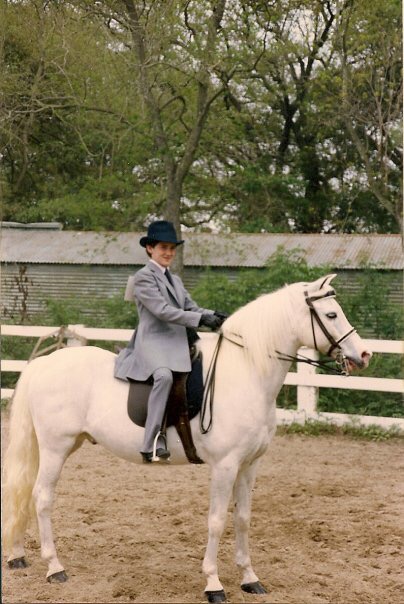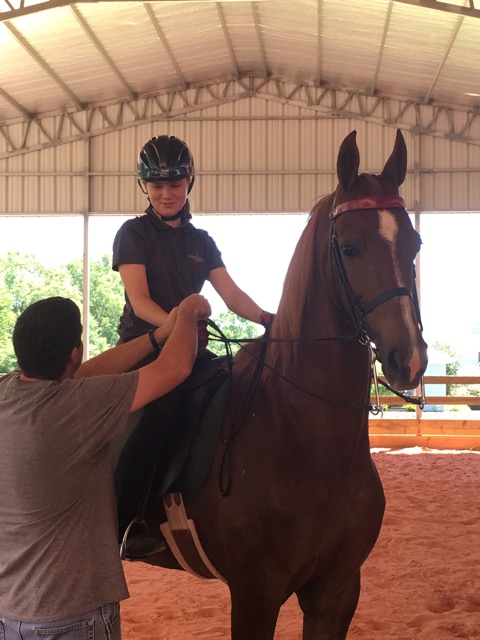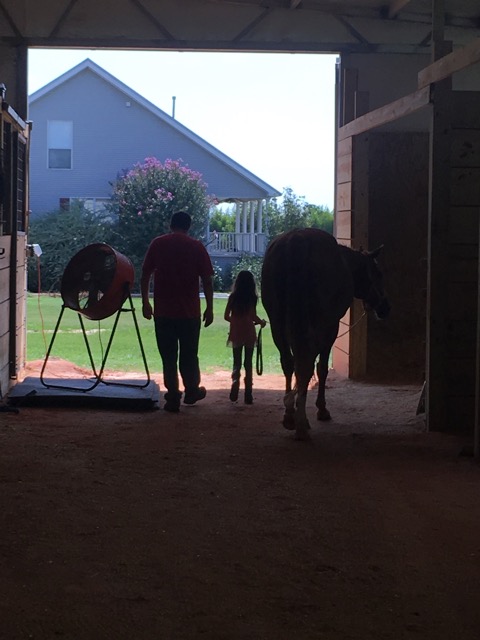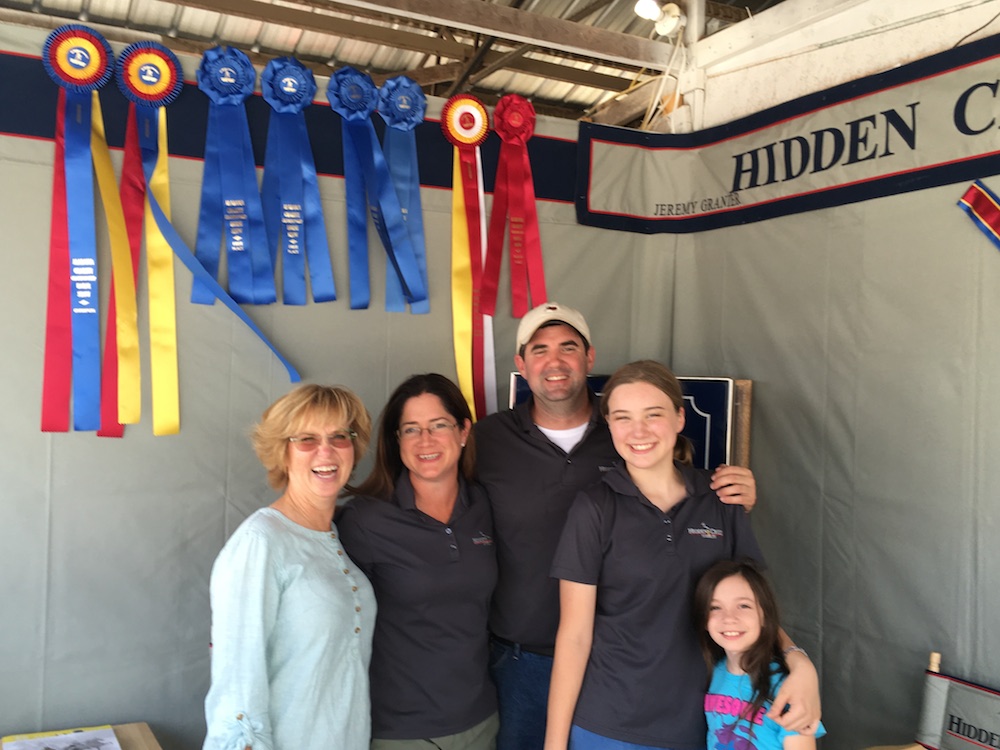- Category: Profiles
- Written by Allie Layos
Quality Over Quantity at Hidden Creek Stables

From the extra time he spends on horses and clients, to his focus on communication and fun, everything at Hidden Creek is centered not on quantity, but its more elusive twin: quality.
Jeremy’s equestrian journey began at an early age. He took his first riding lessons when he was just four or five years old, but it wasn’t until he and his brother Nicholas ended up at trainer Tommy Benton’s barn in Baton Rouge that he got his first introduction to American Saddlebreds, as Tommy was currently transitioning from Arabians into the saddle horse industry.

After high school, he attended college at the University of Memphis and studied business management. Unsure about his career path after leaving college, he decided to do what he knew he loved, and took on a fulltime position at Barbe’s Cascade Stables in New Orleans.
“I started as a groom at first, and then worked my way up into working horses,” he said.
His time at Cascade was formative both professionally and personally; he met his wife, Dania, in 2006, and they married in April of 2011. But even so, after ten years there he began to feel restless.
“I was kind of at a point where I needed to do something different and I didn’t want to leave the area,” Jeremy said. “I decided the smartest thing to do was open my own place, so I could reach out to more people and bring them into the business, and teach more kids.”
In December 2014 he was able to make this dream a reality when he found a location to lease in the Folsom area, about an hour north of New Orleans. Robert and Cheryl Tilghman owned the property, and Jeremy already knew Cheryl, who used to ride at Cascade.
“I heard he was looking to get out on his own, and I needed help with some breeding and mare management, so I had him come here to help me with that while he was deciding what he wanted to do, and it just evolved from there,” Cheryl said.

“People like him and tend to really want to help him and give him information and guidance,” Cheryl said. “I’m a doctor, so we get a hundred years of education. With horse trainers, you learn what you learn from somebody else, and then you have to figure out how to keep on learning, especially if you’re out here by yourself, and I think he’s really done that.”
Today, Hidden Creek Stables breeds one or two mares a year, and is home to about fifteen client horses (including six of Cheryl’s own), and approximately twenty lesson students.
“I don’t want to get into the big numbers,” Jeremy said. “I don’t want to get into teaching 300 lessons a week and having 70 training horses. Ideally I would like to have about 25 training horses and be teaching probably 75-100 lessons a week.”

Cheryl sees the benefits of this decision in the way Jeremy handles her own string of young horses.
“They need a lot of time, and some days you make a plan and it doesn’t work out and you have to do something else with the younger ones,” she said. “That time – being able to have that – is something I was very impressed with. I’ve been at a lot of big barns, and there’s a lot of hurry up. That’s fine if you’re a good rider and there just for your weekly ride, but on the younger horses that doesn’t work.”
The impressive facility at Hidden Creek offers a big advantage when training the young stock, boasting of 50 acres, an indoor, outdoor, and lots of fence-line, and Jeremy utilizes every bit of it in his training. He has also carried over a few training techniques from his hunter/jumper days, and still looks to the hunter/jumper world often for inspiration.
“To me they’re thriving,” he said. “If you look at most kids in the hunter/jumper world, they’re out at that barn five or six times a week, and they’re just riding and riding and riding, and it makes a big difference.”
While Jeremy doesn’t necessarily think Saddlebred owners need to ride their show horses that many times a week, he does try and incorporate more saddle time into his lesson program, particularly with his younger students.
“I encourage them to come multiple times a week, or as many times as they can,” he said.

Jeremy believes that one of the other differences between the Saddlebred world and the hunter/jumper world is the level to which it becomes a family sport. Though Saddlebred exhibitors are fond of touting the sport as a family endeavor – and it often is – he has found the hunter/jumper world to be even more family-oriented, and has tried to capture that at Hidden Creek, too.
“I find if you can get a family involved they’re going to stay in the business a lot longer than if just the daughters ride,” he said.
Rebecca Stewart, her mother Barbara Grannan, and her daughter, Olivia, are one such family. Barbara has ridden Saddlebreds her entire life, so Rebecca grew up around them, and is excited to now share that love with Olivia.
Though she has known Jeremy for about fifteen years, she and her mother moved their shared show pleasure horse, Ashlyn’s Sport Model, or “Sporty,” to Jeremy about a year ago, and found Jeremy to be incredibly supportive of their family passion.
“Splitting a horse is not always smiled upon by other trainers, but he’s really embraced it and used it, and been very supportive of all of us sharing,” Rebecca said. “I have a really crazy schedule and never know when I’m going to be able to do lessons. My mother will ride her during the week and sometimes I’ll do a short warm up, and then Olivia will do her ride. He’s been very flexible, and he loves having the whole family out there.”

The secret to this running so smoothly is the importance Jeremy places on being up front and honest with clients, and keeping an open line of communication between all parties.
“The communication part is key between any trainer and client, but Jeremy has been fantastic at it,” Rebecca said. “Having two owners for one horse can be difficult at times, but the communication is open and all three of us talk about Sporty and what is going on with her, and it’s been great.”
She also appreciates that Jeremy respects the knowledge she and her mother share.
“My mother and I are a little different; we’ve been at it so long we’ve also individually trained our own horses,” she said. “I have some knowledge there, and Jeremy has always been very respectful. If I say, ‘Hey can we try that?’ he’ll go, ‘Oh, but have you thought about this?’ There is a mutual respect there.”
For Jeremy, respect is key in all aspects of the business.
“I try to treat everybody equally, whether they come for one lesson a week or have five training horses with me,” he said.
Rebecca has seen this firsthand.
“He is a very hard worker, and he truly cares about his clients and the horses,” she said. “And he’s fantastic with the children.”
In fact teaching, whether children or adults, is one of Jeremy’s favorite parts of the job.
“I get a lot out of that personally,” he said. “Watching someone develop into a rider gives you a little bit of pride that you’ve helped create that.”

“She doesn’t like to speak to adults, and doesn’t like to use her voice at all,” Rebecca said. “Through riding with Jeremy, she now says, ‘whoa,’ she says, ‘get up here,’ she clucks, and when she gets off she says, ‘thank you’ and ‘yes, sir.’ He helps support good behavior and manners in our kids as well.”
But while Jeremy can be a firm instructor, he is also constantly working to make the experience fun for his clients of all ages.
“It’s a hobby; if it’s not fun for them they’re going to go buy a boat,” he said.
While show horse lessons are usually focused on show ring skills, lessons on school horses often have a more relaxed feel to them. From barn dinners at horse shows, to providing wine and spirits for the barn’s adult members, Jeremy does his best to cater to them in as many ways as he can. Even after a rough class at a horse show, he tries to keep the focus on fun and learning.
“You can’t really get on them too much right after, because they already know what they did wrong,” he said. “They don’t need to hear it again right after they come out of the show ring. When they’re ready, they come to me to discuss their ride. We talk about it and then move on. I don’t harp on it.”
This philosophy seems to work, as the Hidden Creek clientele continues to grow.
“The whole atmosphere is just awesome,” Rebecca said. “It’s positive and refreshing. It’s been a great ride for far and I can’t wait to see what next year holds.”
In typical Jeremy fashion, his goals for the future are so simple they are significant: continue to train and instruct quality horses and clients. Compete nationally. And make sure the clients are enjoying the ride.




